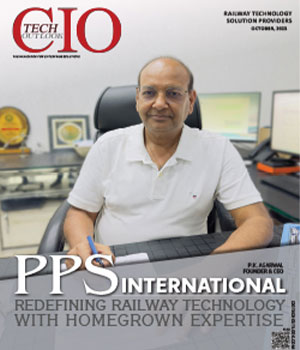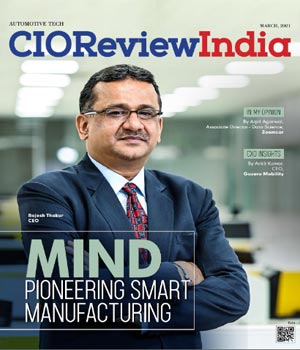
Top five business use cases for Telematics
Janifha Evangeline | Monday, 19 December 2022, 02:47 IST

Building digital capabilities & connectivity by leveraging IoT has become one of the most important priorities for several companies. Particularly in the logistics industry, organizations thrive for leveraging digital technologies with an aim to gain a competitive edge & solve their concerns over various factors such as fleet maintenance, improving driver operation, vehicle failure & real-time tracking monitoring of vehicles, and many others.
According to a research report, there existed around eight million GPS & wireless devices which tracked fleet vehicles, drivers, field service workers and assets in the field, in 2015 in the US but today there are currently over 16 million units. This shows that the number has increased rapidly.
Role of telematics & IoT Fleet Management
One of the major reasons why fleet vehicles in public transportation is crucial for fleet managers is for supervising & organizing vehicles for performance, maintenance as well as tracking. The telematics solutions in fleet management comprise of gathering, storing as well as analyzing data so that it can be forwarded to fleet managers.
However, these data can be exploited by a fleet manager in order to evaluate vehicle maintenance, driver performance as well as cargo management with an aim to gain a competitive edge. It can be also be transformed radically by capturing valuable data regarding the vehicle performance, routes, passengers as well as managing cargo by utilizing IoT-based fleet management.
Data can be mined easily & analyzed more efficiently as well as quickly by integrating the IoT sensors into fleet management platform. A near-real-time dashboard renders access for key metrics, that include vehicle maintenance history, fuel consumption, driver behaviors, engine runtime, vehicle location, etc.
“IoT usage stands as a testimony to heterogeneity. IoT is leveraged across healthcare, agriculture, energy, retail, aviation, manufacturing, logistics, home automation to a large-scale smart city program. The application of IoT varies by domain,” states Arunmani Subramanian, VP – Emerging Technologies, YASH Technologies.
“In the manufacturing vertical, IoT is leveraged for industrial automation, safety, security, optimizing the supply chain, better asset, and resource management. While in logistics, it can be leveraged for fleet management, predicting fleet maintenance, and improving safety measures through vehicle telematics,” he adds.
Improving fleet operations & predictive maintenance
While IoT-enabled telematics system can render a myriad of benefits to fleet management in various ways when it comes to enhancing the security of their vehicles as well as assets, fleet managers can be assured and feel comfortable by adopting solutions in order to improve fleet operations as well as predictive maintenance. The top 5 use cases of telematics include:
Telematics Cargo & Asset Management
Telematics plays a significant role in the supply chain management as well as logistics. Cargo is protected, and safe & secured during the transportation via temperature monitoring, surveillance as well as vibration sensors. Vibrating sensors make sure that fragile goods are safe from breaking during the transportation, while the cargo hold of a vehicle is controlled both by monitoring the temperature as perishable items like medicines & food be preserved fresh.
Fleet Maintenance
Today, sensors in vehicles monitor the performance of vehicles & send alerts either during oil, brake pads, or a battery needs to be changed through integrating the latest telematics solutions.
Passenger information system
The Covid-19 pandemic has led to popping up of several new services that will make passengers aware of any social distancing guidelines and have to be adhered to during boarding, & if there are any accessible seats for people with disabilities. Also, passenger experience can be enhanced when touchless ticketing is connected to buses.
Vehicle Tracking & Route information
While keeping track of the location of the vehicle helps in enhancing efficiency, drivers can take advantage of the routing options in order to prevent traffic congestion, have track of delays as well as find the nearest truck for last-minute deliveries.
Driver performance assistance
A blind-spot assistance system as well as backup cameras can guide drivers by sending them the alerts to objects that are blocking the road, and other scenarios such as the pedestrians crossing the street, or other reckless drivers passing by. The cameras that are installed in the cabin can send alerts to drivers for taking a rest & suggesting stops when needed.
To ensure firms can reap the most benefits from the applications the right fleet management technology is key. Therefore, it is important to choose the right integrated fleet management platform which allows in connecting all vehicles as well as current systems seamlessly.
The road ahead
The telematics market is anticipated to reach USD 213.67 billion by 2029. The major factors fueling the growth of this industry include the increasing consumer demand and growing awareness for telematics solutions. Some of the companies operating in the telematics industry include Trimble, Harman International, Robert Bosch GmbH and many others. The demand for vehicle telematics is anticipated to increase owing to the growing number of Telematics Service Providers in the country. In one of the surveys that was conducted by Tech Mahindra, ninety percent of the Indian consumers choose a 4-wheeler that is equipped with telematics technology. Also, major players in this market are entering acquisitions with an aim to improve their product offerings and elevate brand positioning.
CIO Viewpoint
The Changing Dynamics of Automotive Industry
By CIOReview India Team
The Transition To Cloud Technology
By T.G. Dhandapani, Ex-CIO, TVS Motor
Making Better Informed Management Decisions
By Ravishankar N, CTO, Spectranet
CXO Insights
Tech Landscape of In-Cabin Experiences and...
By Sanjay Saha, India Country Manager, Synaptics
3 Focus Areas For An Autonomous Driving Revolution
By Varun Chhabra, Vice President, Product Marketing Cloud, Dell Technologies
The Electrified Car Industry Must Reimagine its...





.jpg)
.jpg)
.jpg)





